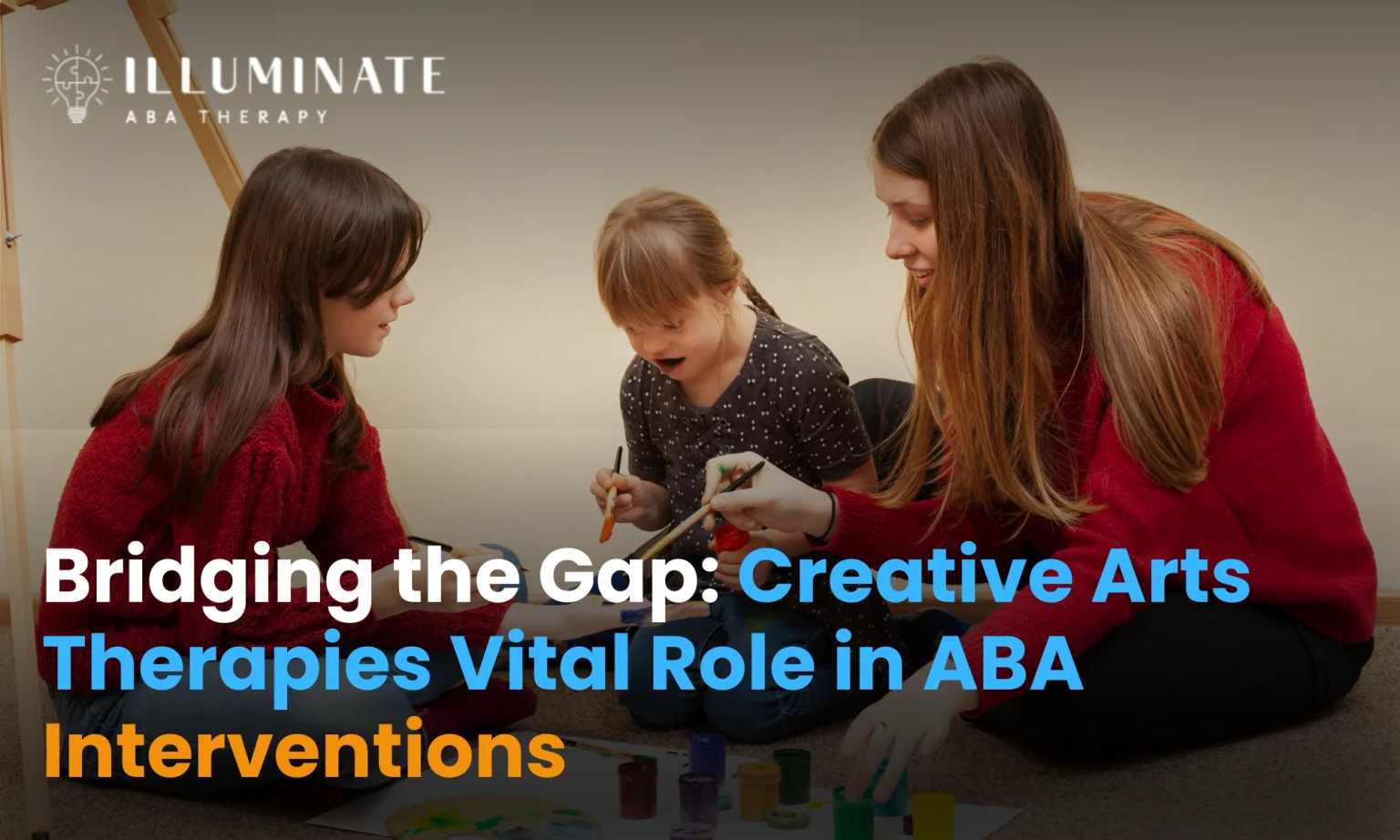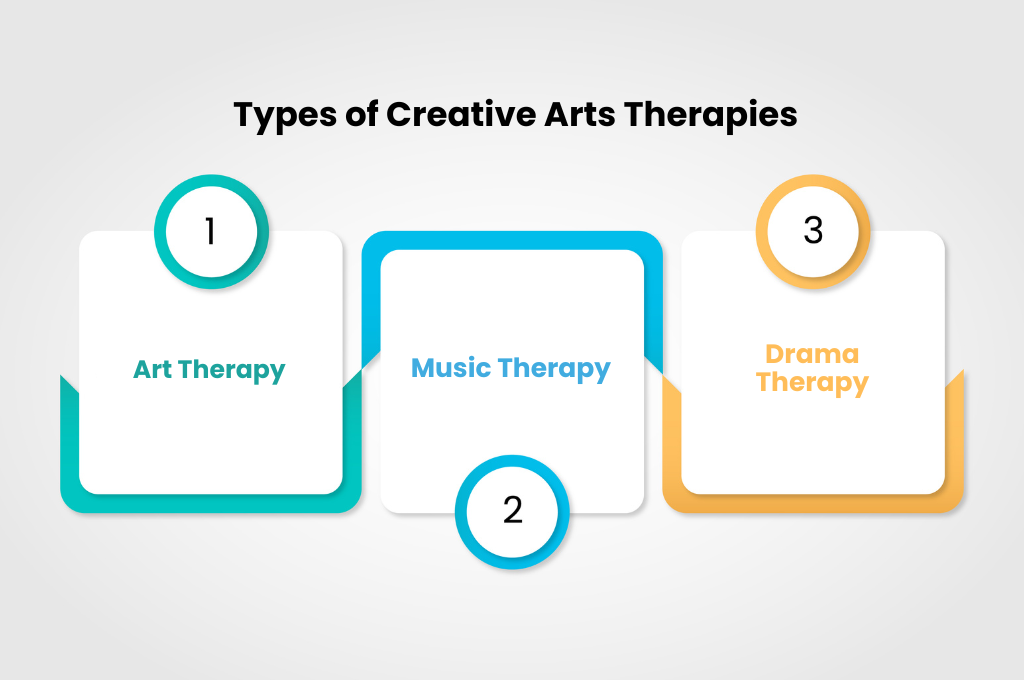Bridging the Gap: Creative Arts Therapies Vital Role in ABA Interventions
ABA TherapyJuly 17, 2025

The Ambitious Pairing: Creative Arts Therapies and ABA Interventions
In the realm of autism intervention, the fusion of Creative Arts Therapies and Applied Behavior Analysis (ABA) emerges as a powerful conduit for holistic progress. This distinctive partnership aims to create a comprehensive approach that caters to the unique needs of individuals on the autism spectrum.
What is ABA Therapy?
ABA Therapy, short for Applied Behavior Analysis, is a structured and evidence-based intervention method that emphasizes the importance of teaching behaviors in a systematic way. Through the analysis of behavior patterns and the implementation of targeted strategies, ABA Therapy aims to enhance communication, social skills, and independence in individuals with autism. The principles of ABA are founded on the belief that desired behaviors can be reinforced through positive interactions and that challenging behaviors can be replaced by more adaptive alternatives.
Understanding the Role of Creative Arts Therapies in ABA
The integration of Creative Arts Therapies within ABA interventions introduces a dynamic dimension to traditional behavioral approaches. Art Therapy, Music Therapy, and Drama Therapy are among the nurturing modalities that foster creativity, expression, and emotional exploration in individuals with autism. These therapeutic outlets not only provide avenues for self-expression but also serve as valuable tools for developing communication skills, emotional regulation, and social interaction. By merging the structured techniques of ABA with the creative outlets of the arts, a symbiotic relationship emerges, enriching the therapeutic journey for individuals on the autism spectrum.
By understanding the symbiosis between Creative Arts Therapies and ABA interventions, individuals with autism can embark on a multifaceted journey towards self-discovery, growth, and empowerment. Explore our articles on using video modeling, music therapy impacts, and effective collaboration with schools for a deeper insight into innovative approaches within the realm of autism intervention.
Enhancing ABA Interventions Through Creative Arts Therapies
When it comes to enhancing ABA interventions, incorporating creative arts therapies can play a vital role in optimizing the effectiveness of autism treatment programs. By leveraging the benefits of creative arts therapies and aligning them with ABA techniques, individuals with autism can experience a more holistic and tailored approach to their intervention plans.
Benefits of Incorporating Creative Arts Therapies
Integrating creative arts therapies into ABA programs offers a myriad of benefits for individuals with autism. Creative arts therapies provide a non-verbal and expressive outlet for individuals who may struggle with traditional forms of communication. Through activities like art, music, and drama therapy, individuals can explore and express their thoughts, emotions, and experiences in a safe and nurturing environment.
Moreover, creative arts therapies foster creativity, imagination, and self-expression, allowing individuals to develop essential social and emotional skills. These therapies promote self-awareness, enhance self-esteem, and encourage positive behavioral changes. By tapping into the artistic and creative potentials of individuals with autism, creative arts therapies can unlock new pathways for personal growth and self-discovery.
How Creative Arts Therapies Complement ABA Techniques
Creative arts therapies complement ABA techniques by providing a multifaceted approach to intervention. While ABA focuses on behavior modification and skill acquisition, creative arts therapies offer a unique avenue for self-expression, emotional regulation, and social interaction. By combining these approaches, individuals with autism receive a comprehensive and well-rounded treatment plan that addresses their cognitive, social, emotional, and behavioral needs.
Incorporating creative arts therapies into ABA sessions can enhance engagement and motivation, making learning more enjoyable and rewarding for individuals with autism. The sensory-rich nature of creative arts therapies can also help individuals improve sensory processing and self-regulation skills, which are essential for navigating daily challenges and social interactions.
By integrating creative arts therapies into ABA programs, therapists and caregivers can create a nurturing and inclusive environment that caters to the diverse needs of individuals with autism. Embracing the synergy between creative arts therapies and ABA interventions opens up a world of possibilities for individuals to explore their potential, cultivate their strengths, and achieve meaningful progress in their developmental journey.
Types of Creative Arts Therapies

When it comes to enhancing ABA interventions, creative arts therapies play a vital role in engaging individuals with autism and promoting comprehensive development. The three main types of creative arts therapies commonly integrated into ABA programs are art therapy, music therapy, and drama therapy.
Art Therapy
Art therapy involves the use of artistic techniques and creative processes to improve communication, emotional expression, and sensory integration. Through painting, drawing, and crafting, individuals with autism can channel their thoughts and feelings in a non-verbal manner, fostering self-awareness and self-esteem. Art therapy sessions within ABA programs create a safe space for individuals to explore their creativity while working on specific behavioral goals.
Music Therapy
Music therapy harnesses the power of music to address cognitive, emotional, and social needs. Through listening, singing, playing instruments, and composing music, individuals with autism can enhance their communication skills, sensory processing, and motor coordination. Music therapy sessions integrated into ABA programs provide a structured environment for individuals to engage with music as a means of self-expression and connection.
Drama Therapy
Drama therapy utilizes theatrical techniques, role-playing, and improvisation to support emotional expression, social skills development, and self-confidence. Individuals with autism benefit from drama therapy by exploring different roles, emotions, and scenarios in a controlled setting, enhancing their understanding of social cues and interpersonal interactions. Incorporating drama therapy into ABA programs allows individuals to practice real-life situations in a supportive and structured environment.
The integration of art therapy, music therapy, and drama therapy into ABA interventions not only enriches the treatment process but also provides individuals with autism multiple avenues for self-expression, skill development, and emotional growth. By recognizing the value of creative arts therapies in enhancing ABA programs, individuals with autism can experience a holistic approach to therapy that nurtures their strengths and fosters their overall well-being.
Implementing Creative Arts Therapies in ABA Programs
When it comes to integrating creative arts therapies into ABA programs, a holistic and collaborative approach is essential for optimal outcomes. By combining the principles of ABA with the expressive and interactive nature of creative arts therapies, individuals with autism can benefit from a more comprehensive and personalized intervention plan.
Collaborative Approaches
Collaboration between ABA professionals and creative arts therapists is instrumental in designing effective and well-rounded interventions. By working together, they can leverage their respective expertise to create a cohesive treatment plan that addresses the diverse needs of individuals with autism. This collaboration allows for the seamless integration of ABA techniques with creative arts therapies, enhancing the overall effectiveness of the intervention.
Creating Individualized Interventions
One of the key strengths of incorporating creative arts therapies into ABA programs is the ability to tailor interventions to meet the unique needs and preferences of each individual. Creative arts therapies such as art therapy, music therapy, and drama therapy provide diverse ways for individuals to engage and express themselves. This individualized approach allows therapists to tap into the individual's strengths and interests, fostering a more meaningful and rewarding therapeutic experience.
Measuring Success through Integrated Therapies
Measuring the success of integrated creative arts therapies in ABA programs involves tracking both behavioral outcomes and progress in expressive and creative domains. By incorporating data collection methods that capture both quantitative (behavioral improvements) and qualitative (expressive growth, emotional regulation) changes, therapists can gain a comprehensive understanding of the impact of these integrated interventions.
Measure
Behavioral Outcomes
Creative Expression Progress
Participant A
Increased social initiations and eye contact during therapy sessions.
Improved self-expression through art activities, demonstrating increased comfort with verbal communication.
Participant B
Decreased instances of repetitive behaviors and increased compliance with instructions.
Enhanced emotional regulation and self-awareness through music therapy sessions, as observed through self-reported mood journals.
By tracking progress across these domains, therapists can evaluate the effectiveness of creative arts therapies in enhancing ABA interventions and adapt the intervention plan as needed to continue supporting individuals with autism in their developmental journey.
The successful integration of creative arts therapies within ABA programs requires a coordinated and individualized approach that acknowledges the unique strengths and needs of each individual. Through collaboration, customization, and comprehensive measurement of progress, individuals with autism can benefit from a more holistic and enriching therapeutic experience that bridges the gap between traditional ABA techniques and the expressive power of creative arts therapies.
